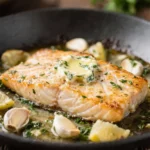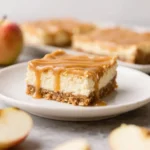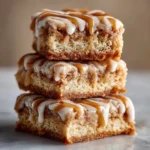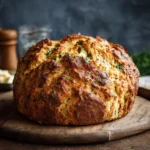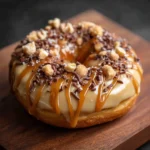Cheddar and Herb Soda Bread: A Hearty Twist on a Classic Irish Staple
There’s something deeply comforting about the warm, golden crust of freshly baked soda bread. While traditional Irish soda bread is beloved for its rustic simplicity—flour, buttermilk, baking soda, and salt—the Cheddar and Herb variation elevates this humble loaf into a savory masterpiece perfect for any occasion. Whether enjoyed with a smear of butter at breakfast, paired with soup at lunch, or served alongside a hearty dinner, this version brings bold flavor and aromatic richness to the table. Let’s explore everything you need to know about making the ultimate Cheddar and Herb Soda Bread, from its historical roots to detailed instructions and variations that will inspire bakers of all levels.
The History of Soda Bread
Soda bread has deep roots in Irish culinary tradition, dating back to the mid-19th century when baking soda became widely available as a leavening agent. Before the advent of yeast-based breads, which required time, warmth, and skill, Irish households needed a quick, reliable way to make bread using readily available ingredients. The combination of soft wheat flour, sour milk (which naturally contains lactic acid), and bicarbonate of soda created a chemical reaction that caused the dough to rise without yeast—a practical solution for rural kitchens.
Traditional Irish soda bread was typically made with just four ingredients: flour, buttermilk, baking soda, and salt. It was often baked on a griddle or in a cast-iron pot over an open fire. Over time, regional variations emerged—some including raisins and caraway seeds for sweetness, others keeping it plain and dense. As Irish immigrants brought their recipes to America and beyond, adaptations began to appear. One of the most popular modern twists is the addition of sharp cheddar cheese and fresh herbs, transforming the once-simple hearth bread into a rich, flavorful centerpiece ideal for contemporary tastes.
Ingredients Breakdown: Why Each Component Matters
The beauty of Cheddar and Herb Soda Bread lies not only in its taste but also in how each ingredient contributes both functionally and flavorfully to the final product. Understanding the role of each component ensures consistent success every time you bake.
- All-Purpose Flour: Provides the structure of the bread. Unlike artisanal loaves that rely on gluten development through kneading, soda bread uses minimal handling. All-purpose flour strikes the right balance between protein content and tenderness.
- Baking Soda: Acts as the leavening agent. When combined with the acidity in buttermilk, it produces carbon dioxide bubbles that cause the dough to rise quickly during baking, giving the bread its characteristic light-yet-dense texture.
- Buttermilk: Essential for activating the baking soda. Its tangy flavor enhances the overall taste and keeps the crumb moist. Real buttermilk—not a milk-vinegar substitute—is preferred for optimal results.
- Salt: Enhances flavor and regulates the activity of the leavening agents. Without enough salt, the bread can taste flat; too much can overpower the delicate herb and cheese notes.
- Shredded Sharp Cheddar Cheese: Adds a rich, creamy, and slightly tangy depth. Using a high-quality aged cheddar ensures maximum flavor impact. Pre-shredded cheese often contains anti-caking agents that can affect texture, so grating your own is recommended.
- Fresh Herbs (such as rosemary, thyme, chives, or parsley): Introduce aromatic complexity and freshness. They contrast beautifully with the richness of the cheese and provide bursts of herbal flavor throughout the loaf.
- Optional Add-ins: Some bakers include finely diced onions, garlic, sun-dried tomatoes, or even jalapeños for extra dimension. These should be used sparingly to avoid disrupting the dough’s consistency.
Step-by-Step Recipe for Cheddar and Herb Soda Bread
Making Cheddar and Herb Soda Bread is surprisingly simple and requires no special equipment or advanced techniques. Follow these steps carefully for a perfectly risen, golden-brown loaf with a tender crumb and irresistible aroma.
Ingredients
- 4 cups (500g) all-purpose flour, plus extra for dusting
- 1 tablespoon baking powder (for additional lift—optional but recommended)
- 1 teaspoon baking soda
- 1½ teaspoons salt
- 1½ cups (about 175g) shredded sharp cheddar cheese, preferably aged
- ¼ cup chopped fresh herbs (a mix of rosemary, thyme, chives, and/or parsley)
- 1¾ to 2 cups (420–480ml) cold buttermilk
- 1 large egg (optional, for enriched texture)
- 1 tablespoon melted butter (optional, for brushing top)
Directions
- Preheat the Oven: Position rack in the center of the oven and preheat to 375°F (190°C). Line a large baking sheet with parchment paper or lightly grease it.
- Mix Dry Ingredients: In a large mixing bowl, whisk together the flour, baking soda, baking powder (if using), and salt until well combined. This ensures even distribution of the leaveners.
- Add Cheese and Herbs: Stir in the shredded cheddar and chopped fresh herbs, tossing gently to coat them in flour. This helps prevent sinking during baking.
- Form the Dough: Make a well in the center of the dry ingredients. Pour in 1¾ cups of cold buttermilk (and beaten egg, if using). Mix with a wooden spoon or spatula until the dough begins to come together. Use your hands to gently fold and press the mixture into a cohesive ball. If the dough feels too dry, add more buttermilk one tablespoon at a time. It should be soft and slightly sticky but hold its shape.
- Shape the Loaf: Turn the dough out onto a lightly floured surface. Gently shape it into a round loaf about 8 inches in diameter and 2 inches thick. Avoid overworking—minimal handling preserves tenderness.
- Cut the Cross: Place the loaf on the prepared baking sheet. With a sharp knife, cut a deep cross (about ½ inch deep) across the top, extending nearly to the edges. This traditional mark allows steam to escape evenly and gives the bread its iconic look.
- Bake: Transfer to the oven and bake for 45 to 55 minutes, or until the loaf sounds hollow when tapped on the bottom and the internal temperature reaches 190–200°F (88–93°C). The crust should be deep golden brown.
- Optional Finish: Remove from the oven and immediately brush the top with melted butter for a softer crust and enhanced flavor. Let cool on a wire rack for at least 15–20 minutes before slicing.
Tips for Perfect Cheddar and Herb Soda Bread
- Use Cold Buttermilk: Keeping the buttermilk chilled helps create a better texture by slowing gluten development and preventing premature activation of the baking soda.
- Don’t Overmix: Over-kneading leads to toughness. Mix just until the dough comes together, then stop. A shaggy, slightly uneven texture is normal and desirable.
- Grate Your Own Cheese: Pre-shredded cheeses contain cellulose or starch to prevent clumping, which can interfere with moisture absorption and melt quality.
- Fresh Herbs Are Key: Dried herbs lack the vibrancy and moisture content needed. If absolutely necessary, use 1/3 the amount of dried herbs, but fresh is vastly superior.
- Check Oven Temperature: An oven thermometer ensures accuracy. Too hot, and the outside burns before the inside cooks; too cool, and the rise suffers.
- Let It Rest Before Slicing: Cutting into the bread too soon releases trapped steam and can make the interior gummy. Wait at least 15 minutes for best texture.
- Test for Doneness: If unsure, insert a skewer or toothpick into the center—it should come out clean. Also listen for the hollow sound when tapping the base.
Variations and Customizations
One of the joys of soda bread is its versatility. Once you master the basic recipe, feel free to experiment with exciting variations tailored to your palate or dietary preferences.
- Spicy Jalapeño-Cheddar: Add ½ cup finely diced pickled or fresh jalapeños (seeds removed for milder heat) for a zesty kick.
- Mediterranean Style: Swap cheddar for feta or goat cheese and add chopped sun-dried tomatoes, olives, and oregano.
- Garlic & Onion: Fold in 2 tablespoons of minced roasted garlic and ¼ cup sautéed onions for deeper umami flavor.
- Whole Wheat Version: Replace up to half the all-purpose flour with whole wheat flour for a nuttier, heartier loaf. You may need slightly more buttermilk.
- Gluten-Free Option: Use a high-quality gluten-free all-purpose flour blend with xanthan gum included. Results may vary, so follow package guidelines closely.
- Dairy-Free Adaptation: Substitute buttermilk with almond or oat milk mixed with 1 tablespoon lemon juice or vinegar per cup. Use dairy-free cheese alternatives for the cheddar.
- Sweet-Savory Fusion: Add a handful of dried cranberries or golden raisins along with the cheese and herbs for a delightful sweet-and-salty contrast.
Health Considerations and Nutritional Value
While Cheddar and Herb Soda Bread is undeniably delicious, it’s worth considering its nutritional profile, especially if you’re watching sodium, fat, or carbohydrate intake.
Nutritional Highlights (per serving, approximately 8 slices):
- Calories: ~280–320 kcal
- Protein: ~10–12g (from cheese and egg, if used)
- Fat: ~12–16g (mostly from cheddar and butter)
- Carbohydrates: ~38–42g
- Fiber: ~2–3g (can increase with whole grain flours)
- Sodium: ~500–700mg (largely from cheese and salt)
Health Notes:
- The bread contains refined carbohydrates, so individuals managing blood sugar may want to consume it in moderation or opt for whole grain versions.
- Cheddar cheese provides calcium and protein but is high in saturated fat and sodium. Choosing reduced-fat cheddar or limiting quantity can help reduce these elements.
- Buttermilk adds probiotics and is lower in fat than regular milk, contributing to gut health in moderate amounts.
- Herbs like rosemary and thyme offer antioxidants and anti-inflammatory compounds, adding subtle health benefits.
- Because soda bread lacks yeast and long fermentation, it may be easier to digest for some people who experience bloating from sourdough or commercial breads.
Frequently Asked Questions (FAQ)
Can I make Cheddar and Herb Soda Bread ahead of time?
Yes! Bake the loaf completely, let it cool, and store it wrapped in foil at room temperature for up to two days. For longer storage, freeze sliced portions for up to three months. Reheat in a toaster oven or wrapped in foil at 350°F (175°C) for 10–15 minutes.
Why did my soda bread turn out dense?
Common causes include expired baking soda, insufficient liquid, overmixing, or underbaking. Always check your leaveners’ freshness and measure ingredients accurately.
Can I use self-rising flour instead?
No—self-rising flour already contains baking powder and salt, which would throw off the balance of leaveners and salt. Stick to all-purpose flour for control over the recipe.
Is it possible to make this bread vegan?
Yes! Use plant-based buttermilk (non-dairy milk + acid), vegan cheese shreds, and omit the egg or replace with a flax egg (1 tbsp ground flaxseed + 3 tbsp water).
What makes soda bread different from other breads?
Unlike yeast-leavened breads, soda bread relies on a chemical reaction between baking soda and acid (buttermilk) for rise. It requires no kneading or rising time, making it a quick bread.
Can I add seeds or nuts?
Absolutely! Toasted walnuts, pumpkin seeds, or sesame seeds add crunch and nutrition. Fold in ¼ to ½ cup with the cheese and herbs.
Summary
Cheddar and Herb Soda Bread combines the rustic charm of traditional Irish baking with bold, modern flavors for a loaf that’s both satisfying and simple to make. Packed with sharp cheese and fragrant herbs, it’s perfect fresh from the oven with a pat of butter or alongside soups and stews.

